Battle of The CPU Stock Coolers! 7x Intel vs 5x AMD, plus an EVO 212
by E. Fylladitakis on July 22, 2016 9:00 AM EST- Posted in
- Cases/Cooling/PSUs
- CPUs
- AMD
- Intel
- Cooler Master
- Cooler
The Intel Coolers
We have seven Intel coolers to test for the means of this review. Six are stock coolers accompanying processors that the company has released during the past decade and the seventh is the Intel BXTS15A (TS15A) that the company recently released as an aftermarket upgrade.
| Vendor | Cooler | Common Bundle | Core | Fins | Fan (mm) |
Mass (g) |
| Intel | D75716-002 | Socket 775 Celerons | Alu | Alu | ≈80 | 118 |
| C25704-002 | Socket 775, P4 6x0 | Cu | Alu | ≈80 | 132 | |
| E97378-001 | Socket 1155 Intel i5 | Cu | Alu | ≈80 | 146 | |
| E97379-001 | Socket 1155 Intel i3 | Alu | Alu | ≈80 | 92 | |
| D60188-001 | Socket 775, C2D E8x00 | Cu | Alu | ≈80 | 419 | |
| E31964-001 | Socket 1366 i7-X | Cu | Cu/Alu | ≈100 | 435 | |
| BXTS15A | Aftermarket, ≈$30 | Cu | Alu | ≈80 | 362 |
The Intel C25704-002 and Intel D75716-002 probably are the oldest coolers in this review. These were usually accompanying Socket 775 Intel Celeron and Pentium 4 “Prescott” processors several years ago. They are of nearly identical size and very similar in terms of design, with the exception that the D75716-002 has an aluminum core and a less powerful fan.
Intel C25704-002 and D57516-002
The Intel D60188-001 is essentially an overgrown C25704-002. Intel has been receiving a lot of criticism back in the day for having noisy stock coolers, therefore they nearly doubled the mass of the C25704 and used a significantly less powerful fan. The Intel D60188-001 usually was the stock cooler accompanying high performance Core 2 Duo processors.
The E97378-001 and the E97379-001 look almost identical and their ID numbers are very close, but major differences can be discerned when the coolers are turned upside down. Aside from the E97378 having a copper core, the E97379 has significantly lower mass and straight fins, hinting the use of a more powerful fan. Bent pins cause significant turbulence at high airflows and unnecessarily increase the cooler’s noise output.
Intel E97378-001 and E97379-001
Intel’s first attempt to design a high performance cooler was probably the Intel E31964-001, the stock cooler of socket 1366 i7 Extreme processors. They kept the core design the same but replaced half of the aluminum fins with copper fins and used a semi-transparent fan with blue LEDs. The mix of aluminum and copper fins creates a “flower” visual effect similar to that first seen on Zalman CNPS coolers nearly two decades ago. The straight fins and very high current rating of the fan hint that the Intel E31964-001 is not designed with silence in mind.
The Intel BXTS15A is an aftermarket cooler sold by Intel as an upgrade for socket 1151 CPUs but will also fit on older 1150/1156 processors. A mere glimpse on the cooler reveals that it is just an oversized version of the company’s stock coolers, mostly just much taller than what they have been supplying alongside with the CPUs. It is almost identical to the E31964-001, but has only aluminum fins and they are taller. It also has straight fins and a very strong fan, hinting that this will not be a silent cooler either.


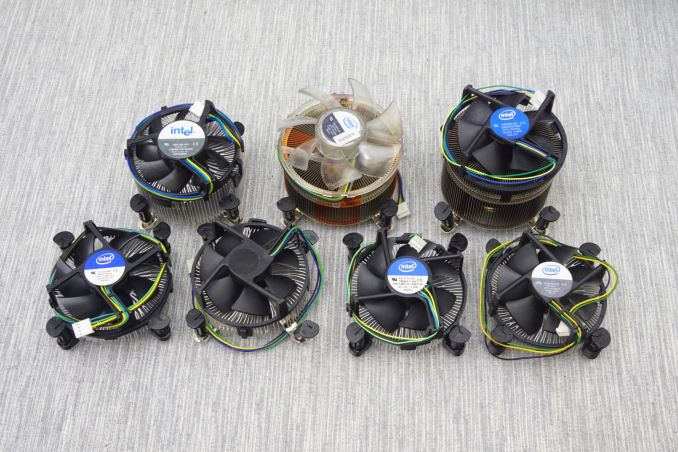
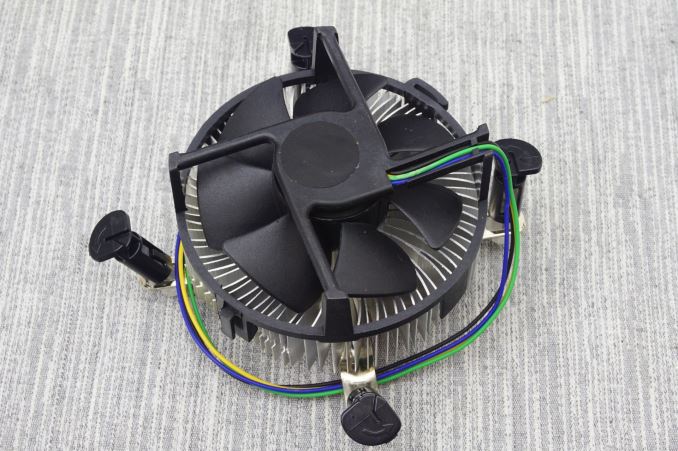
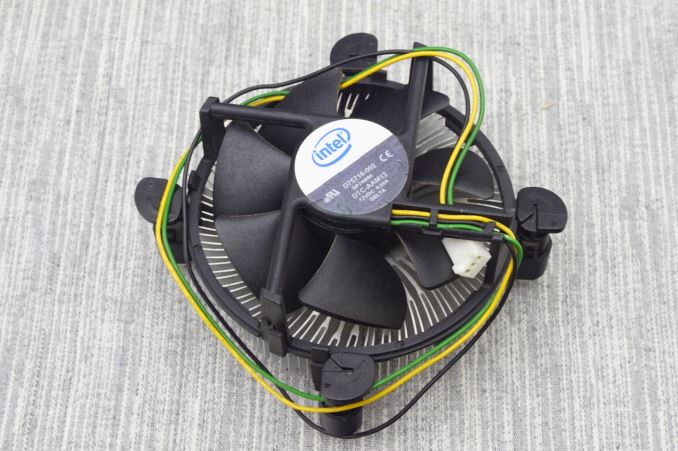

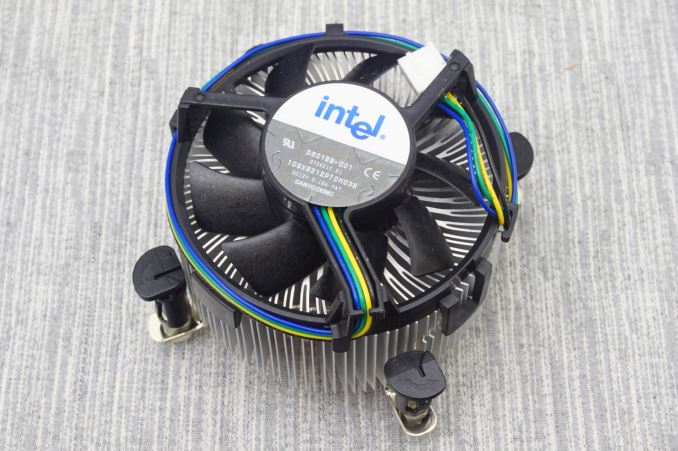

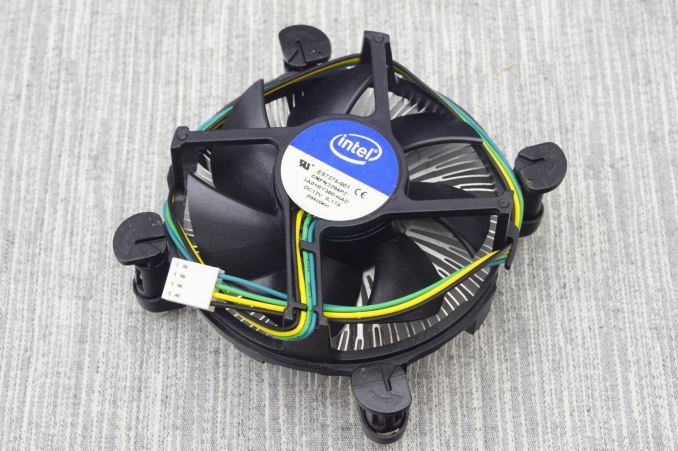
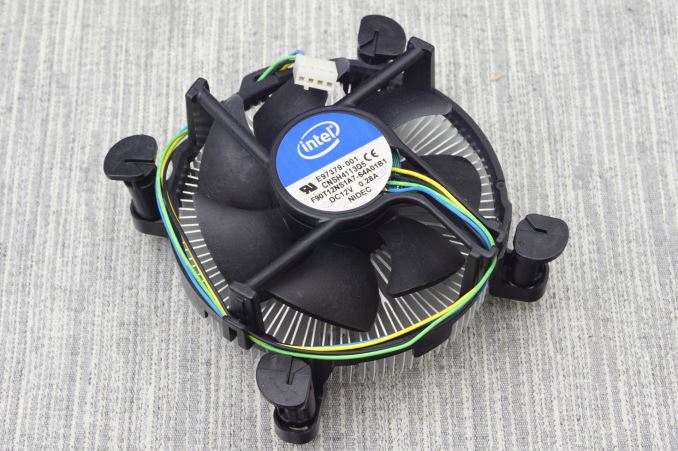
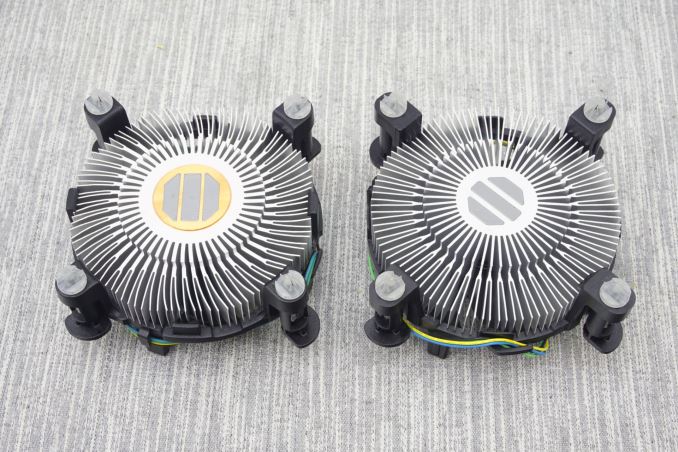
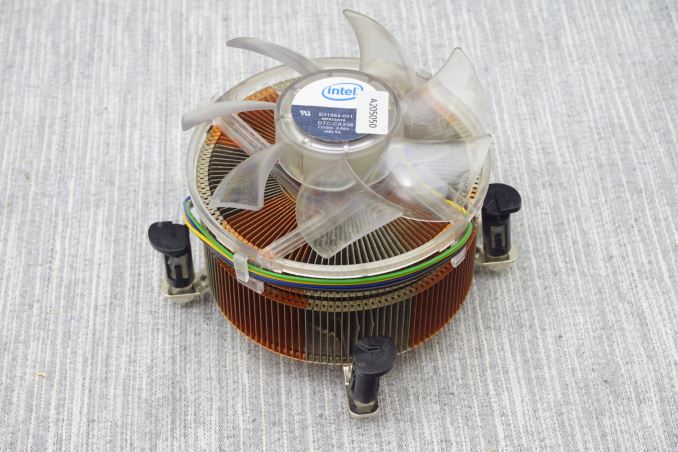
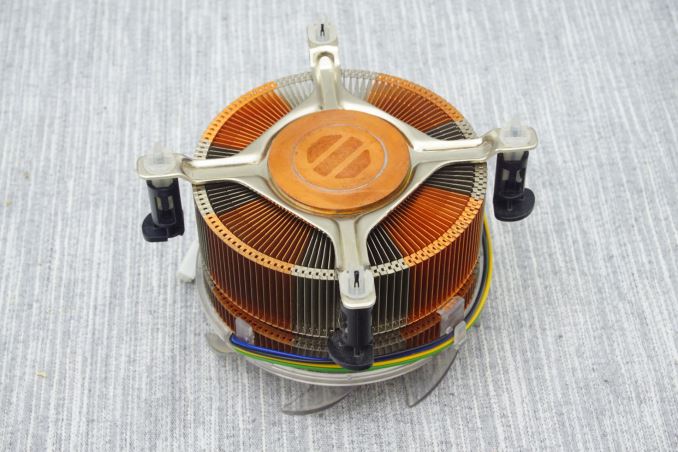
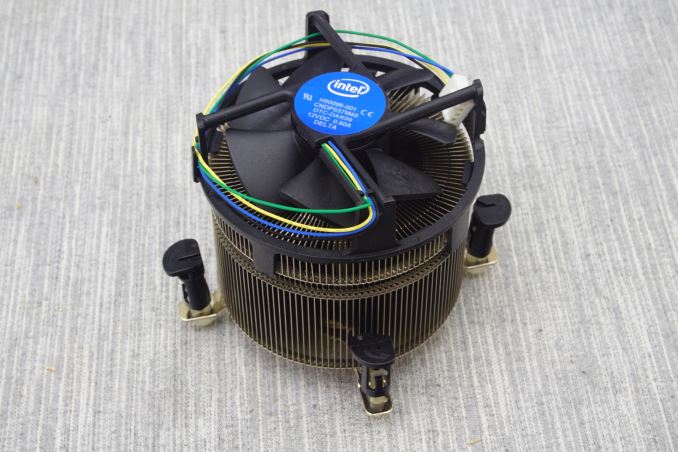
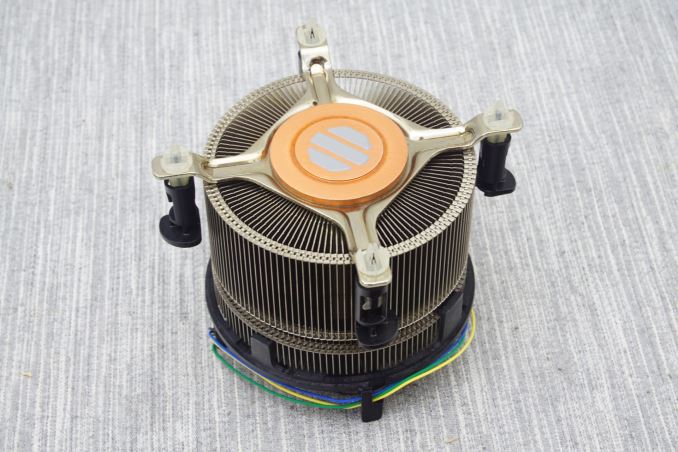








82 Comments
View All Comments
yannigr2 - Friday, July 22, 2016 - link
Your comment makes you look stupidly indeed. A company is giving a top quality cooler that saves you $20-$30 and you find it stupidly sad?SetiroN - Friday, July 22, 2016 - link
Yes, I find the fact that the best thing a CPU manufacturer's got going is their bundled cooler extremely sad.yannigr2 - Saturday, July 23, 2016 - link
Some people will find sadness in everything AMD does. At the same time they will praise Nvidia or Intel for doing the exact same thing.DanNeely - Friday, July 22, 2016 - link
I disagree. While part of this demonstrates clearly what most of us already know; most stock coolers suck. It also shows that AMD actually did deliver a good stock cooler in the Wraith. Cooling wise it matches the budget standby Cooler Master 212; and comes close to matching it in terms of sound as well making it the first stock cooler I wouldn't automatically recommend trashing for an aftermarket job.If I were nit picking, I'd've liked to've seen an affordable non-tower aftermarket cooler in the mix as well because slim profile cases don't have room for big towers. OTOH by including a 212 in the mix this article can be used as a baseline to compare testing results on them elsewhere.
A5 - Friday, July 22, 2016 - link
Meh. If AT is going to get back in the CPU cooler review game, this is a good place to start for two reasons.1) Make sure they're starting from a good assumption (stock coolers suck).
2) Compare it to the current most popular replacement.
From there, you can start adding in higher-end coolers and comparing them to the baseline.
Ratman6161 - Friday, July 22, 2016 - link
I don't necessarily agree that "stock coolers suck". They suck for most of the people who would be reading this article in the first place :) but are generally more than adequate for people running their system at stock speeds and more or less typical conditions.I think Intel has essentially taken the right approach. Bundle a good enough cooler with most CPU's since they are adequate to the task and the people using them won't know the difference anyway. Sell the "K" CPU's without a cooler. If you are buying a K, then then you are probably also a person who wants to chose their own cooling solution too. Everybody wins.
JoeyJoJo123 - Friday, July 22, 2016 - link
Except in the latter case you're actually losing.They USED to bundle the stock cooler, and even if it wasn't used permanently, it was certainly useful for testing boot or as something to hold you over until you save another ~$100 for an all-in-one CLC that couldn't fit your initial PC budget.
I'd be all in if the lack of the stock cooler also meant they dropped prices on those same kinds of CPUs, but the prices actually went up AND they lost the stock cooler. Double loss for the consumer.
mikato - Thursday, July 28, 2016 - link
I bought non-K Intel CPUs (and AMD CPUs) and aftermarket coolers. Up to this point, I had useless stock coolers that NEVER got used since most of the time I bought a decent aftermarket cooler at the same time I build the computer. There is no point selling them on ebay. They were just an unfortunate waste of resources.So now I appreciate both strategies. Either don't include a cooler (and its price), or include a decent budget cooler (for less added price than a low-end aftermarket cooler). Both work for me. But as you say, if Intel hasn't passed on that cost saving then that isn't good.
It would be interesting to know how many people that build their own computers also use a non-stock CPU cooler (excluding the higher end Intel and AMD's Wraith). And how has that evolved over time since CPUs produce less heat now, and since budget coolers have improved quite a bit for their price.
To me water cooling is just plain unnecessary and has been for a long time. Air cooling does easily well enough, for less money, and less hassle. You don't get much for spending the extra money.
JonnyDough - Monday, August 1, 2016 - link
Best comment. I have about 18 desktop PCs, all of them from the last 6 years or so. Only one has a stock cooler and that's my HTPC, because it's so watt that it's quiet with the stock and sits in my living room far from me. I also think water cooling is a waste, when all one needs is a good cooler and some case fans. Water cooling nets just a few degrees difference in ambient case. If your VRMs are getting hot because the mobo maker didn't put a heatsink on it, just throw some cheap heatsinks on it.dishayu - Friday, July 22, 2016 - link
It IS useful. It helps put definite numbers to the theory that we already know to be true (that stock coolers suck). It tells users how much of a benefit they would get, going from their stock cooler to a 212 Evo (and subsequently other coolers they test in the future).This is good work, show some respect.